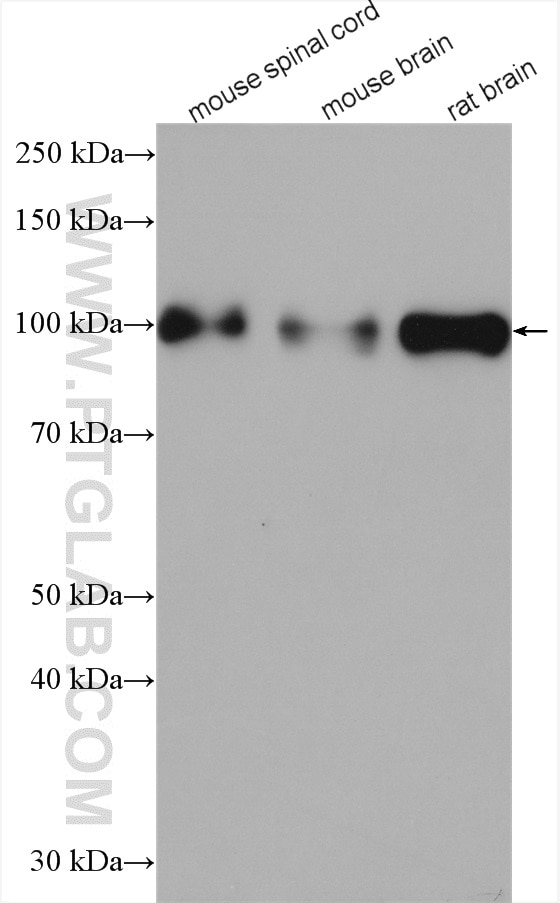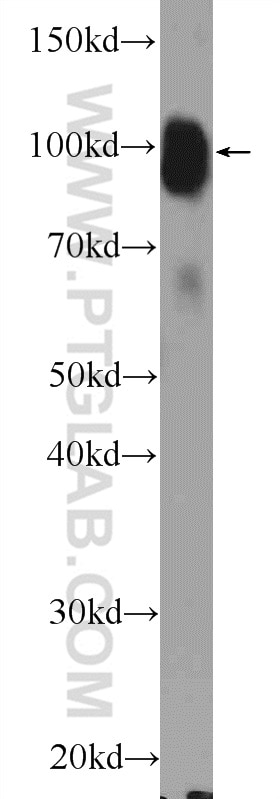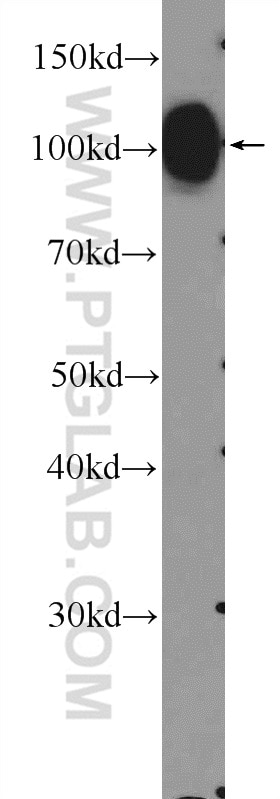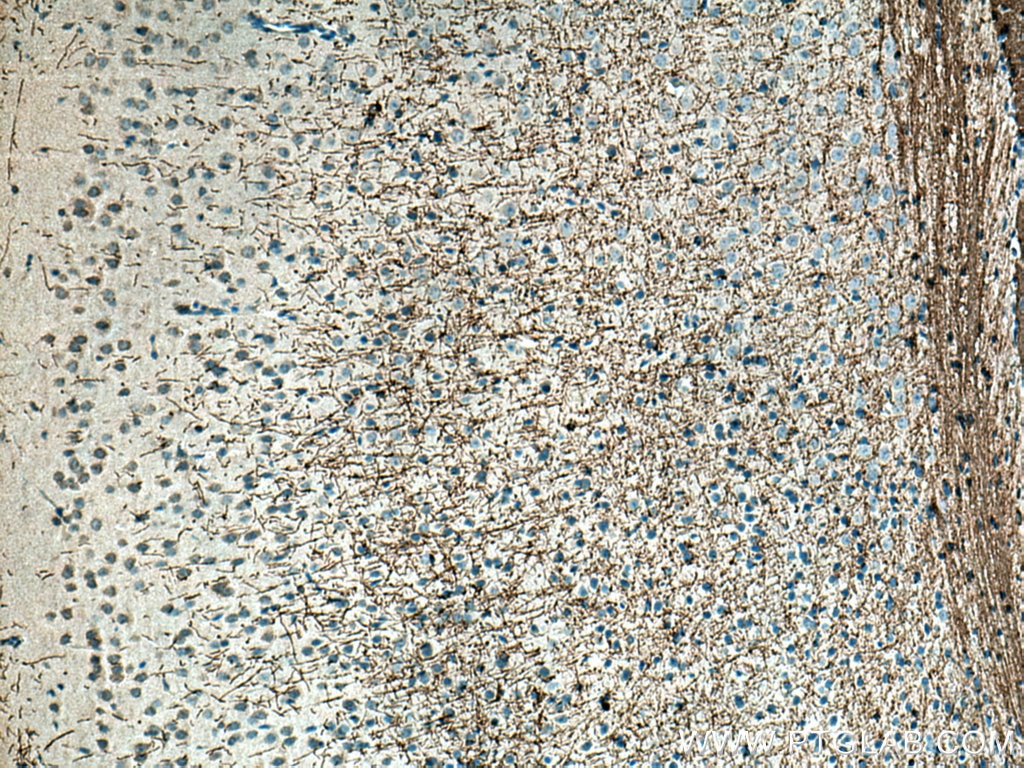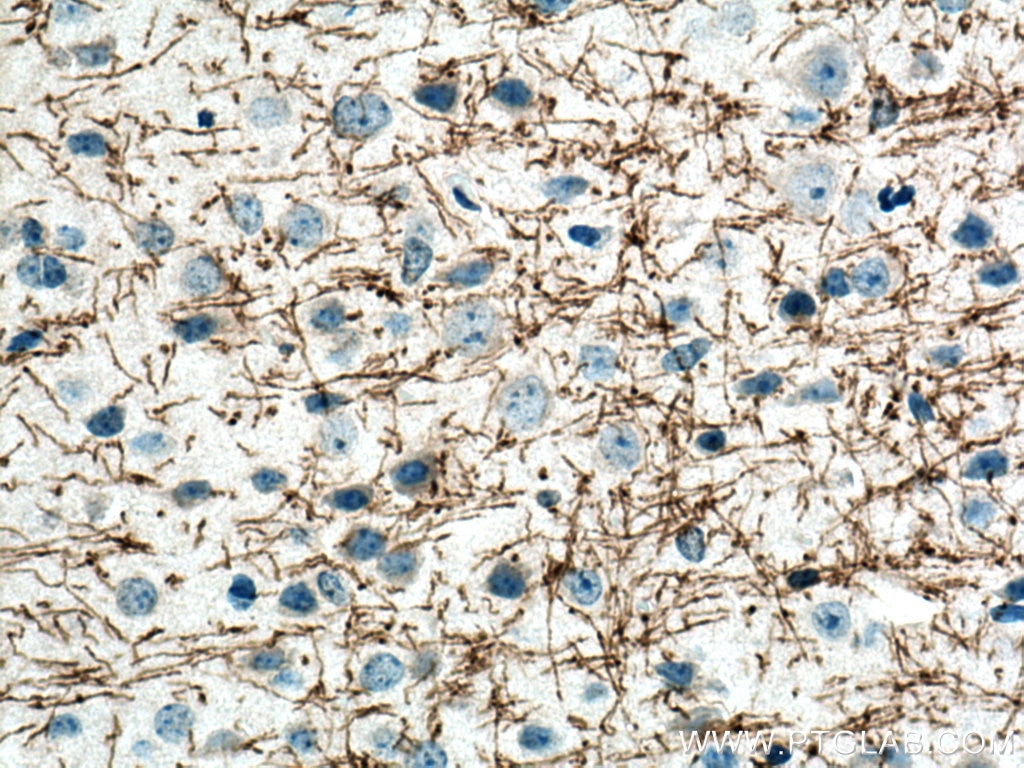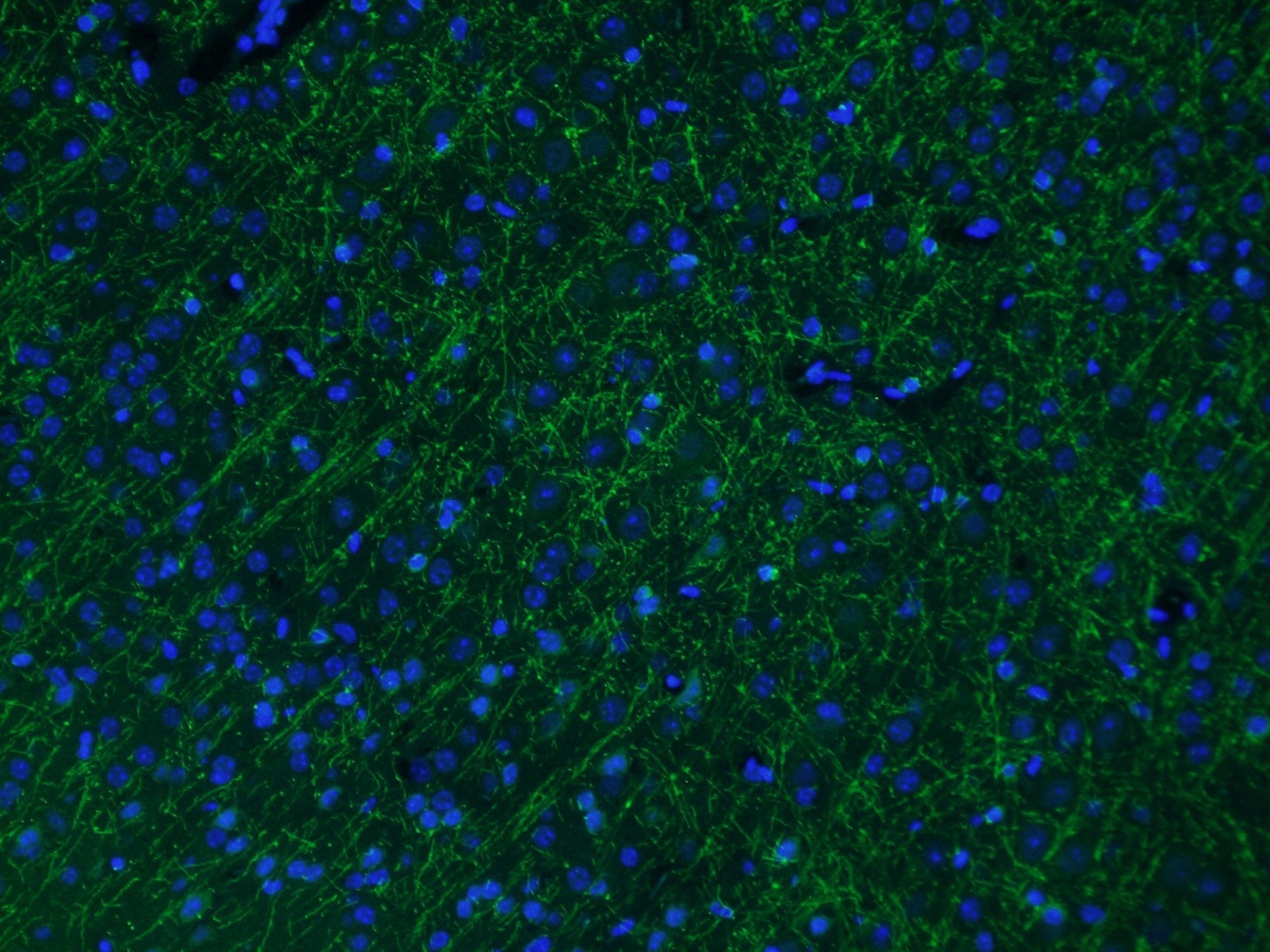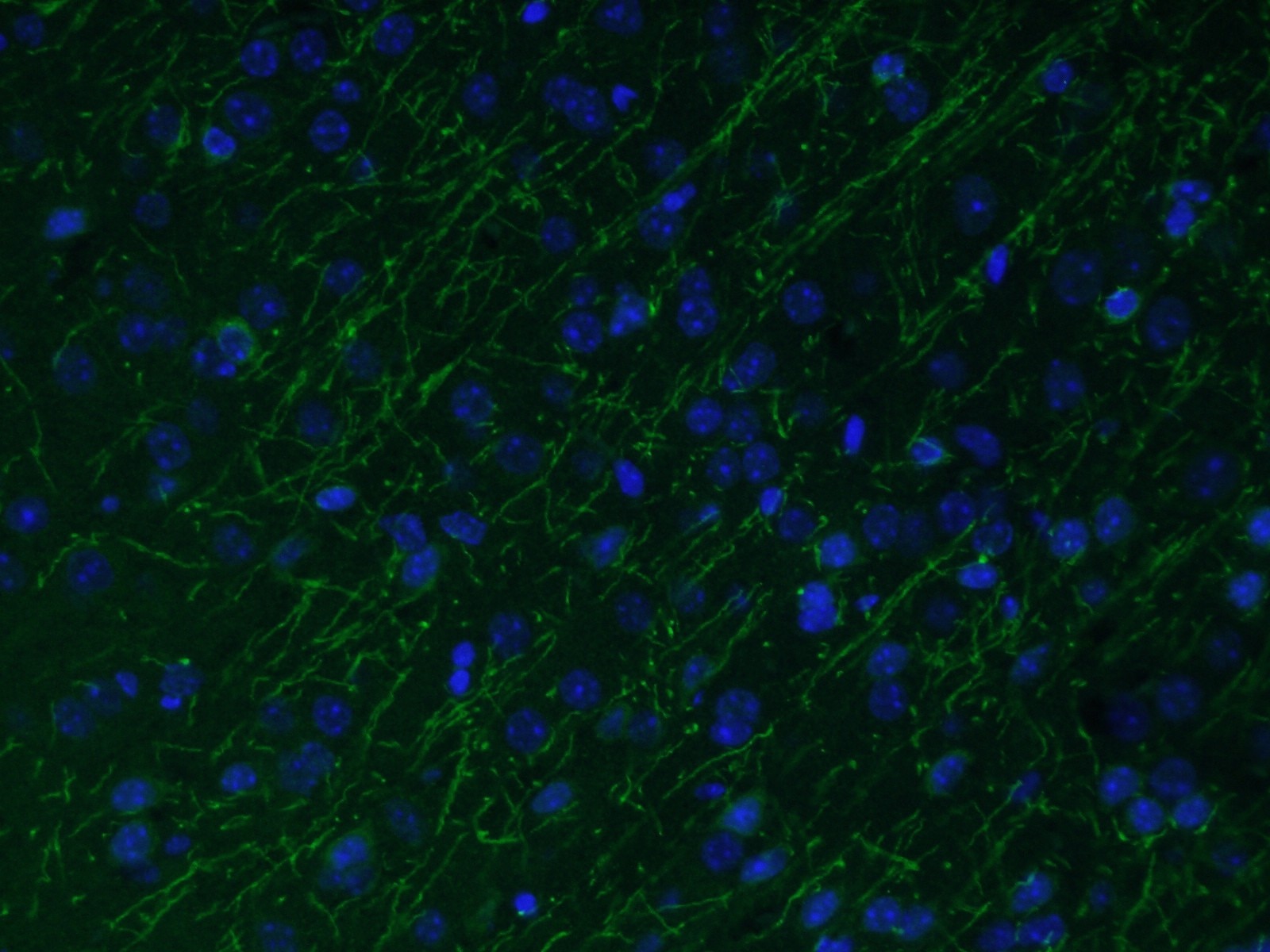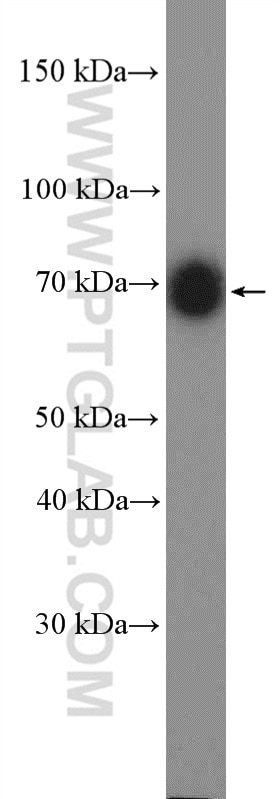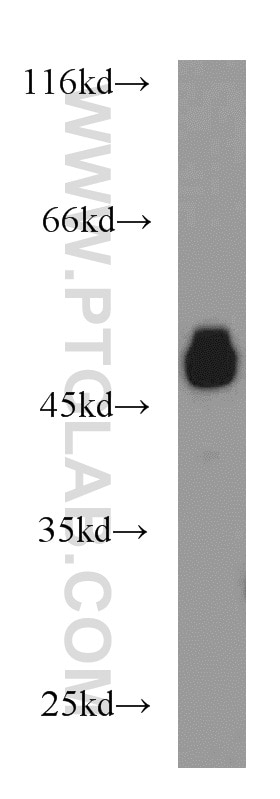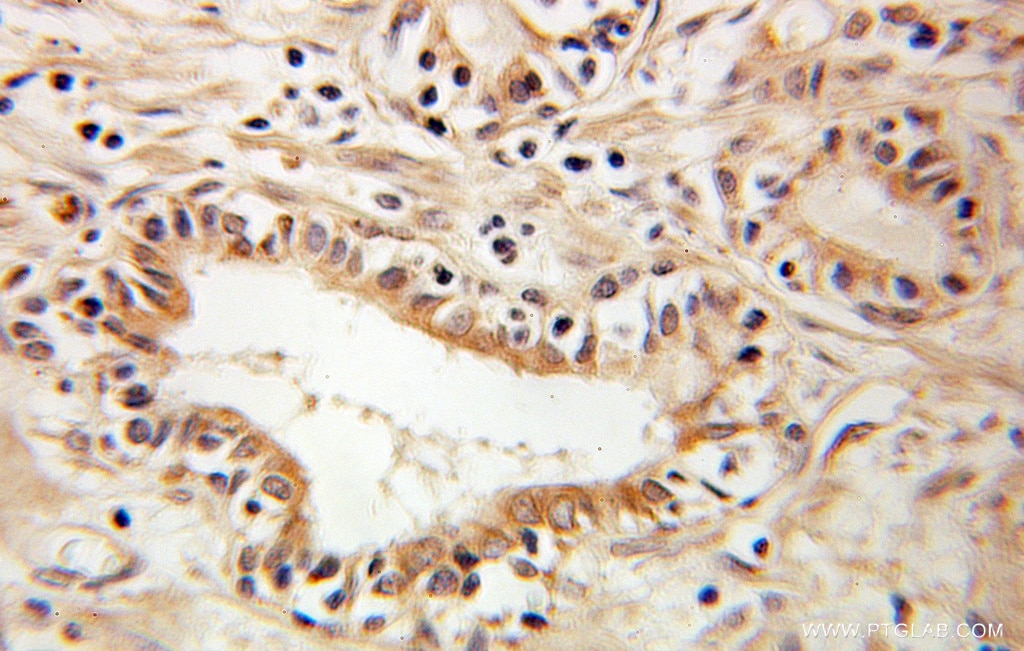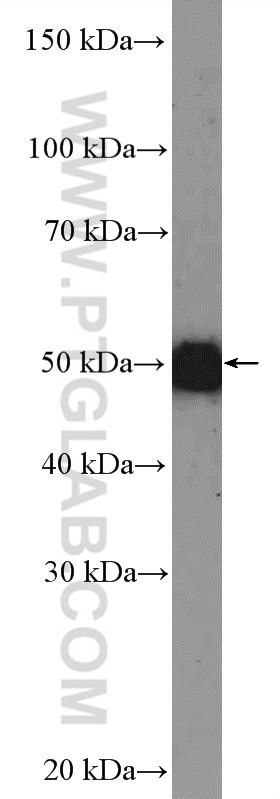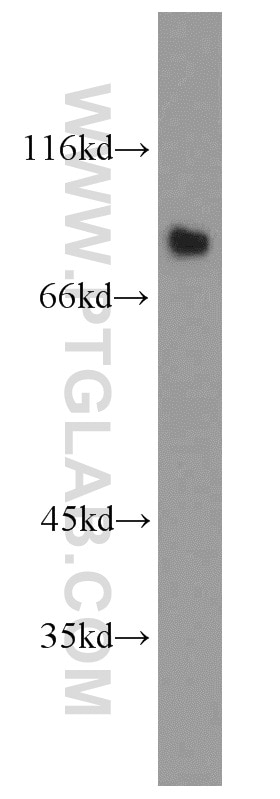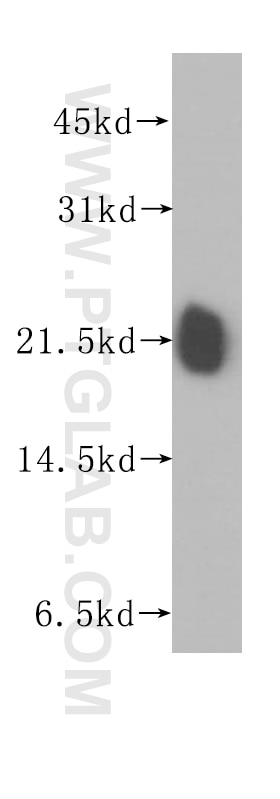MAG Polyklonaler Antikörper
MAG Polyklonal Antikörper für IF, IHC, WB,ELISA
Wirt / Isotyp
Kaninchen / IgG
Getestete Reaktivität
human, Maus, Ratte
Anwendung
WB, IHC, IF, ELISA
Konjugation
Unkonjugiert
Kat-Nr. : 14386-1-AP
Synonyme
Galerie der Validierungsdaten
Geprüfte Anwendungen
| Erfolgreiche Detektion in WB | Maus-Rückenmarkgewebe, Maushirngewebe, Rattenhirngewebe |
| Erfolgreiche Detektion in IHC | Maushirngewebe Hinweis: Antigendemaskierung mit TE-Puffer pH 9,0 empfohlen. (*) Wahlweise kann die Antigendemaskierung auch mit Citratpuffer pH 6,0 erfolgen. |
| Erfolgreiche Detektion in IF | Maushirngewebe |
Empfohlene Verdünnung
| Anwendung | Verdünnung |
|---|---|
| Western Blot (WB) | WB : 1:1000-1:3000 |
| Immunhistochemie (IHC) | IHC : 1:50-1:500 |
| Immunfluoreszenz (IF) | IF : 1:50-1:500 |
| It is recommended that this reagent should be titrated in each testing system to obtain optimal results. | |
| Sample-dependent, check data in validation data gallery | |
Veröffentlichte Anwendungen
| WB | See 10 publications below |
| IF | See 4 publications below |
Produktinformation
14386-1-AP bindet in WB, IHC, IF, ELISA MAG und zeigt Reaktivität mit human, Maus, Ratten
| Getestete Reaktivität | human, Maus, Ratte |
| In Publikationen genannte Reaktivität | human, Maus, Ratte |
| Wirt / Isotyp | Kaninchen / IgG |
| Klonalität | Polyklonal |
| Typ | Antikörper |
| Immunogen | MAG fusion protein Ag5845 |
| Vollständiger Name | myelin associated glycoprotein |
| Berechnetes Molekulargewicht | 69 kDa |
| Beobachtetes Molekulargewicht | 100 kDa |
| GenBank-Zugangsnummer | BC053347 |
| Gene symbol | MAG |
| Gene ID (NCBI) | 4099 |
| Konjugation | Unkonjugiert |
| Form | Liquid |
| Reinigungsmethode | Antigen-Affinitätsreinigung |
| Lagerungspuffer | PBS mit 0.02% Natriumazid und 50% Glycerin pH 7.3. |
| Lagerungsbedingungen | Bei -20°C lagern. Nach dem Versand ein Jahr lang stabil Aliquotieren ist bei -20oC Lagerung nicht notwendig. 20ul Größen enthalten 0,1% BSA. |
Hintergrundinformationen
MAG (myelin associated glycoprotein) is a 100-kDa transmembrane glycoprotein that is a member of the SIGLEC family of proteins. MAG is localized in periaxonal Schwann cell and oligodendroglial membranes of myelin sheaths where it functions in glia-axon interactions (PMID: 17241126). It is a functional ligand for the Nogo-66 receptor (PMID: 12089450). MAG is a cell adhesion molecule for postnatal neural development and is thought to be involved in the process of myelination.
Protokolle
| Produktspezifische Protokolle | |
|---|---|
| WB protocol for MAG antibody 14386-1-AP | Protokoll herunterladen |
| IHC protocol for MAG antibody 14386-1-AP | Protokoll herunterladen |
| IF protocol for MAG antibody 14386-1-AP | Protokoll herunterladen |
| Standard-Protokolle | |
|---|---|
| Klicken Sie hier, um unsere Standardprotokolle anzuzeigen |
Publikationen
| Species | Application | Title |
|---|---|---|
Brain A role of the frontotemporal lobar degeneration risk factor TMEM106B in myelination. | ||
Acta Neuropathol Commun TMEM106B deficiency impairs cerebellar myelination and synaptic integrity with Purkinje cell loss. | ||
J Cereb Blood Flow Metab Connexin43 promotes angiogenesis through activating the HIF-1α/VEGF signaling pathway under chronic cerebral hypoperfusion. | ||
Mol Neurobiol Quercetin Alleviates Demyelination Through Regulating Microglial Phenotype Transformation to Mitigate Neuropsychiatric Symptoms in Mice with Vascular Dementia. | ||
Neurosci Bull Digoxin Ameliorates Glymphatic Transport and Cognitive Impairment in a Mouse Model of Chronic Cerebral Hypoperfusion | ||
CNS Neurosci Ther Proteomic analysis of the effects of caffeine in a neonatal rat model of hypoxic-ischemic white matter damage. |
Rezensionen
The reviews below have been submitted by verified Proteintech customers who received an incentive forproviding their feedback.
FH Emma (Verified Customer) (02-22-2022) | Works well on FFPE prostate tissue by IF. (Tris-EDTA antigen retrieval).
|
